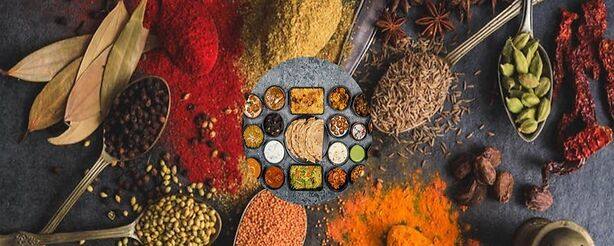
kitchens Of India
India, famously known as ‘The Land of Spices’ has always been known for the rich taste in its food. As diverse it is in its cultures, languages and traditions, the diversity in its fooding habits is no less. Every state here has some dishes that have become inseparable from their state’s name, like ‘Punjab’s Chole, kebabs of Lucknow, Hyderabadi biryani, sweets of Kolkata, Mumbai’s Vada-Pav and the list goes on. In all, every state’s households in India have some unique and flavorsome dishes that have a story of their own, biryani being one of them.
So, in this edition of the magazine, let’s talk about the ‘World of Biryani’.
A plate of biryani with rice, meat and spices is a complete meal in itself. Each spoonful of this traditional dish is infused with aromatic spices and rich flavors. Lovers of the dish, swear by its distinctive taste. However, a key fact that most biryani lovers do not know is that despite its various local varieties, biryani did not originate in India.
During the Mughal reign, Awadh (now Lucknow) was the capital of their kingdom, which is how the Awadhi biryani with its delicate flavors got its name. When Aurangzeb became the ruler, he sent his Nizams to Hyderabad and Arcot and their chefs created the Hyderabadi and Arcot biryanis by infusing the local flavors.
With the Nawab Wajid Ali Shah deposed to Kolkata, his chef created the traditional Kolkata biryani by adding potatoes, which are now integral to the biryani of that region. Tehri biryani, a vegetarian version of the dish, is believed to have been created during this time as food for bookkeepers of the court who would not eat mutton biryani.
Below is the recipe for a mouth-watering Lucknowi Mutton Biryani Ingredients
3 1/2 Cups Basmati Rice
1 kg Mutton
4 Large Onions Thinly Sliced
3 Tbsp Ginger Garlic Paste
1 Tsp Kashmiri Red Chilli
4 Tbsp Curd
Biryani Masala
2 Tsp Cumin Powder
1 Tsp Turmeric/Haldi
Salt To Taste
3 Tsp Sugar
4 Bay Leaves
2 Pinches Of Saffron
5 Black Cardamoms
4 Cups Water
5 Tbsp Ghee
2 Tsp Rose Water
Pinch Of Nutmeg Powder
Instructions
Step 1
Begin by soaking the rice for minimum 30 minutes after thorough washing.
Step 2
Caramelize one half of the onions slices by frying them with a little salt and sugar and cook on low flame.
Step 3
Wash the mutton well and then marinate with salt, turmeric/haldi and set aside for 15 minutes. Drain the excess water.
Step 4
In a heavy bottomed pan, heat the ghee and add the rest of the onion and fry until brown. Add the mutton one by one.
Step 5
Fry the mutton on high heat and switch off the heat once the raw smell goes.
Step 6
In another bowl, mix the curd, ginger garlic paste, red chilli powder, biryani masala and cumin powder, and add the mutton, coating each piece properly.
Step 7
Add the mutton to the pan again and on high heat, braise the mutton till the fat melts.
Step 8
Add 2 cups of water and cover and cook until 3/4 is cooked well. This process can take upto 50 minutes depending upon the quality of the mutton. (You can also use the pressure cooker for faster cooking).
Step 9
In a deep pan, boil the water with cardamoms, 1 bay leaf and the soaked basmati.
Step 10
Cook until half done.
Step 11
Switch off the gas and drain the water after 4 minutes.
Step 12
Divide the rice into two parts and spread on a wide plate.
Step 13
Drizzle melted ghee.
Step 14
Your mutton should be ready side by side.
Step 15
Meanwhile, soak the saffron in little warm milk.
Step 16
Next, in the pan, place the bay leaves at the bottom.
Step 17
Add half the rice and a little sprinkle of saffron milk.
Step 18
Keep making the layers with mutton being the next. Do not mix.
Step 19
Now add another layer of the rice, so on and so forth.
Step 20
On the top, add nutmeg powder and then the caramelized onions.
Step 21
Sprinkle the rose water and cover the lid to trap the steam. Cook for 30 minutes but do not let the biryani becomes dry.
Step 22
Serve warm with raita and chutney.
